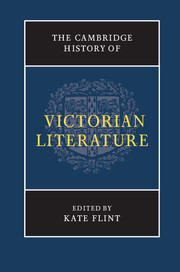Book contents
- Frontmatter
- Introduction
- PART I AUTHORS, READERS, AND PUBLISHERS
- PART II WRITING VICTORIA’s ENGLAND
- PART III MODES OF WRITING
- 7 Lyric and the lyrical
- 8 Epic
- 9 Melodrama
- 10 Sensation
- 11 Autobiography
- 12 Comic and satirical
- 13 Innovation and experiment
- 14 Writing for children
- PART IV MATTERS OF DEBATE
- PART V SPACES OF WRITING
- PART VI VICTORIAN AFTERLIVES
- Select bibliography
- Index
12 - Comic and satirical
from PART III - MODES OF WRITING
Published online by Cambridge University Press: 28 March 2012
- Frontmatter
- Introduction
- PART I AUTHORS, READERS, AND PUBLISHERS
- PART II WRITING VICTORIA’s ENGLAND
- PART III MODES OF WRITING
- 7 Lyric and the lyrical
- 8 Epic
- 9 Melodrama
- 10 Sensation
- 11 Autobiography
- 12 Comic and satirical
- 13 Innovation and experiment
- 14 Writing for children
- PART IV MATTERS OF DEBATE
- PART V SPACES OF WRITING
- PART VI VICTORIAN AFTERLIVES
- Select bibliography
- Index
Summary
The Victorian period is one rich in comic writing. Indeed, a high proportion of its major literary achievements and much of its most innovative work, from Dickens through Carroll to Wilde, are comic in one form or another. Within that pattern, however, there is a wide range of kinds of writing and significant changes in their nature as the century proceeds. Victorian comic verse is relatively weak in satire but strong in formal invention, deploying parody, pastiche, and grotesque verbal facility in often unsettling ways. The dominant kinds of novel that the Victorians inherited from their major eighteenth- and early nineteenth-century precursors – Fielding, Smollett, Sterne, Burney, and Austen – were essentially comic ones, both in mode and plotting, but novelists found the essentially providential assumptions that had underpinned those authors’ comic resolutions increasingly unsustainable as the century went on. Victorian readers were also much less happy than their Augustan and Romantic precursors with satire, whether in prose or verse, and the cruelty and vulgarity that often accompanied it.
The 1820s have with reason been seen as marking something of a ‘watershed’ in the English comic imagination, separating the frank and bawdy satirical world of Gilray and Rowlandson from the more seemly and genially humorous comic landscape of the Victorians. Bums, farts, and extra-marital sex would have no place in Punch; or the London Charivari (1841–2002), the most enduring and significant home of graphic humour in the period.
- Type
- Chapter
- Information
- The Cambridge History of Victorian Literature , pp. 265 - 287Publisher: Cambridge University PressPrint publication year: 2012

